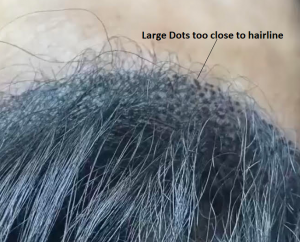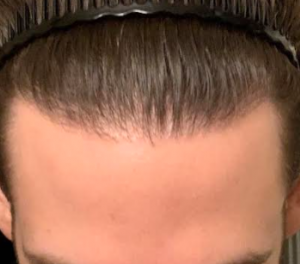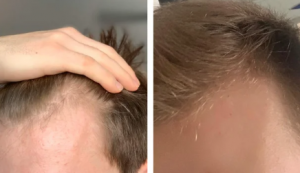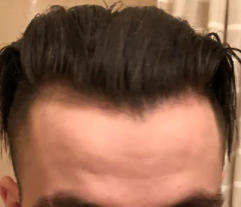Alopecia Areata is a disabling disease for those afflicted. A new treatment is now going through clinical trails. Read about it here: https://www.nejm.org/doi/full/10.1056/NEJMoa2110343
Without the same hair style, it is difficult to see the detailed difference between these two photos; however after 3 years at a minimum, this man held on to his hair from finasteride use and that says a lot for this drug. I suspect that if he stopped it, he might lose more of the hair in the front of the head much giving him more balding than it was 5 years ago.
From digging around various hair forums it’s clear there is a generally negative feeling towards PRP as a treatment for MPB. From my limited knowledge on the area though it’s seems like this stems from unrealistic expectations around it regrowing lots of hair. Pretty much every study I can find on it reports statistically significant positive effects in terms of growth and density. Neither may be enough to make a different aesthetically but if at the very least it maintains then it seems like a pretty solid (though expensive) treatment option.
The studies all use fairly limited numbers of participants (< 50) and only really cover up to 2 year time frames but results are pretty consistent.
Am I missing something or is this a legit option for people who want to maintain but don’t handle the DHT blockers well?
PRP is thought by experts, like me, to have little value for genetic hair loss other than the microneedling that goes along with it.
There are millions of finisteride users in the US. The document here: https://clincalc.com/DrugStats/Top300Drugs.aspx suggests 3 million users per year in the US.
Can these be excised and replanted? I’ve got some singles at the front of my hairline but the hairs are maldirected and the hairline is too low. Can I repair this? Will I have scars at the front of my hairline? My hairs seem to turn radially along with my hairline instead of pointing forward. This isn’t normal, right? It seems like things should just be more forward pointing instead of radially pointing.
Can any well trained, experienced hair tech remove them with a manual punch and redesign my hairline? I know this is a hard problem to fix, I’m looking for advice
A skilled surgeon can use the FUE technique to remove recipient site grafts when they are positioned improperly. Radially placement of grafts is far too common. When I train doctors, I have to drive the point that hair is not like a bicycle wheel with the center being the top of the head. Hair between the parts are parallel to each other and point forward almost horizontal in the very front of the hairline.
Yes, as hairs miniaturize, they become stunted and will not grow out to their normal length. At the end of the miniaturization cycle, they are often short and just stay there not growing at all and one day they are not there anymore.
This is the poor man’s treatment routine for hair loss
Finasteride works better when the hair loss is more recent. The older a man gets with hair loss, the longer it has been since those stem cells produced hair. Also much of the miniaturization that is present in younger men is not there when they get older and balder for a longer time period.
Anybody considering a hair transplant must have a Personalized Master Plan because balding is progressive. You must know your donor supply, your hair mass index and these two factors will tell you a great deal about your ability to keep up with the balding and not run out of hairs to move around. A good doctor who cares more about you then your money is critical to this entire process.
https://jamanetwork.com/journals/jamadermatology/article-abstract/2788258
Conclusion: As efficacy data from head-to-head trials accumulate, there could be a better sense of the relative efficacy of the different doses of the 5-? reductase inhibitors and minoxidil. The findings of this meta-analysis contribute to the comparative effectiveness literature for AGA therapies with regard to the compared interventions.
I’ll bet if you measure the height of the donor area from the base of the skull to the truly fringe area in the midline it would be 2 1/2 inches or less. This is what happens to many of the advanced Class 7 pattern patients in their lifetimes. That’s what’s going to happen to the grafts that are transplanted from above this area, they will disappear. What remains is the $$ the doctor put in his bank account. Too many doctors would have transplanted the non-permanent hair on his head leaving him with a freaky look when it disappears. I always talk about a personalized master plan and how this type of planning is critical to any hair transplant you undertake for your future results.
I have a strong family history for balding. I am now 19 and this is my hairline. Should I be worried? I am from India?
Your midline hairline is just taking on its mature shape position and may go up in the corners sometime prior to your 29th birthday. I don’t think that you are balding now, but in the future I don’t know.
Page 97 of 1234







